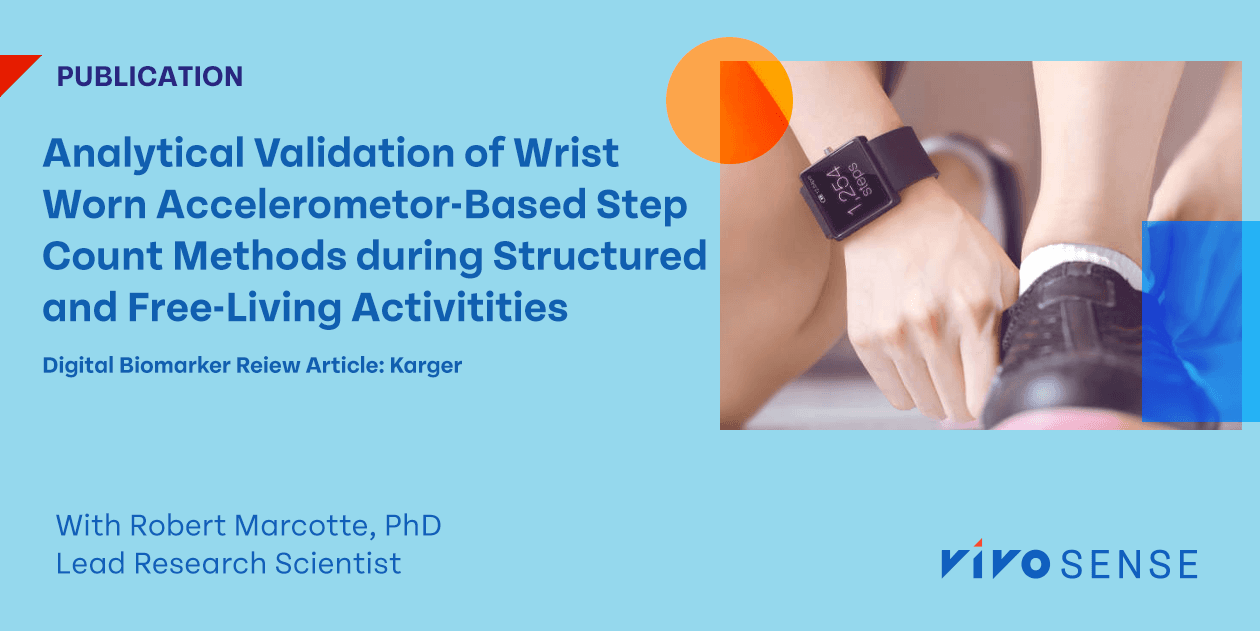In the VivoSense study and recent Karger publication, “Analytical Validation of Wrist-Worn Accelerometer-Based Step Count Methods during Structured and Free-Living Activities,” VivoSense researchers evaluated four open-source algorithms designed to detect steps using wrist-worn accelerometer data. These methods leveraged different approaches to detect steps—including peak detection, threshold crossing, and frequency analysis—and were tested across various walking speeds and daily activities. Given the growing use of wearable technology in clinical research and health monitoring, ensuring precise step detection is essential for capturing meaningful insights into physical activity and function.
The findings revealed that the performance of these algorithms varied depending on walking speed and activity type. Some methods were highly accurate during controlled, structured walking, where step patterns were consistent, while others performed better in free-living conditions, where movement is more variable. This discrepancy highlights the challenges of accurately measuring real-world physical activity using wrist-worn devices. Researchers emphasized that no single algorithm performed best across all conditions, underscoring the importance of understanding a method’s limitations and selecting methods best suited to the behavioral patterns of the population of interest.
Beyond step count accuracy, the study raises broader questions about using wrist-worn wearables for physical activity monitoring. Unlike devices worn on the hip or ankle, which capture predominantly walking-related movements, wrist-worn devices capture all arm movements. This includes everyday activities, which can introduce noise into the data, affecting the accuracy of method-detected steps. As a result, refining step detection algorithms to minimize false positives and improve consistency remains a critical area for future research.
This research highlights the need for careful consideration when choosing step-detection methods for wrist-worn devices. Their accuracy depends on the behavioral patterns of the population of interest and the specific characteristics of the algorithm. As digital health technologies continue to evolve, improving the accuracy of step-counting methods will be key to enhancing the reliability of wearables in clinical and real-world applications.
Partner with VivoSense to leverage our expertise and algorithm suite, including a validated step-counting method optimized for real-world performance.
Read the Full Karger Publication Here